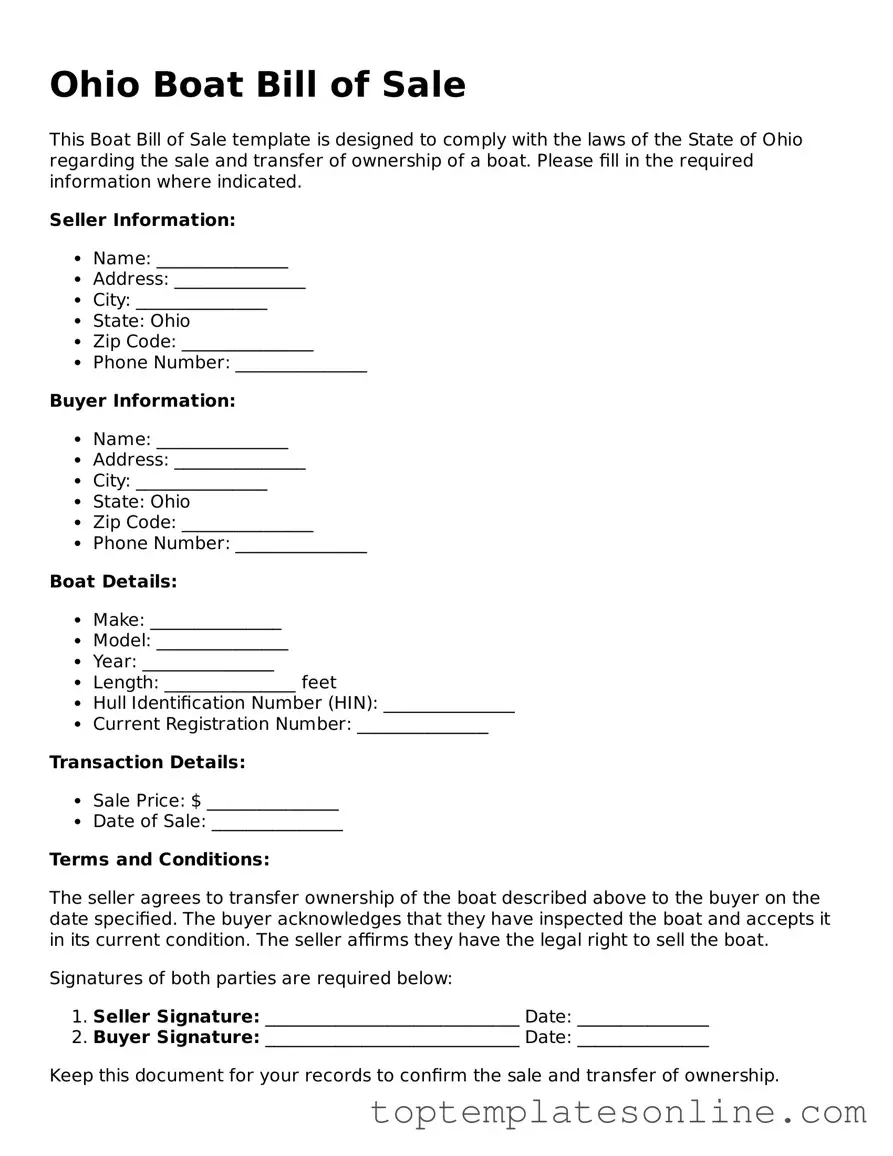Blank Boat Bill of Sale Template for Ohio State
The Ohio Boat Bill of Sale is a legal document that serves as proof of the transfer of ownership for a boat from one party to another. This form outlines important details such as the boat's description, the sale price, and the signatures of both the seller and buyer. Understanding this document is essential for ensuring a smooth and lawful transaction in Ohio's boating community.
Customize Boat Bill of Sale Here
